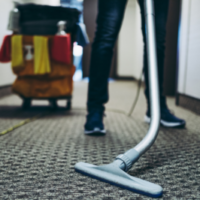Executive Summary
In virtually all US states, official emergency response plans (EOPs) include roles for incarcerated workers as part of preparation, response, and recovery work. Many EOPs define roles for “inmates” or “prisoners” that place these workers in danger from environmental hazards or exposure to chemicals or biological dangers. Elected officials often admit that they could not afford to engage in disaster response without access to this coerced and typically unpaid work force.
But in most cases, states also refuse to extend the typical health and safety protections of other workers as laid out in the Occupational Safety and Health Act (OSHA). These states alternately rely on longstanding and racist loopholes in Civil War-era amendments that extended coerced labor for those in the carceral system, assertions that incarcerated disaster workers are volunteers engaging in dangerous work as a form of redemption, and claims that exemptions in federal OSHA law for public sector employees shield departments of correction from having to abide by labor protections.
We explore the language and structure of assignments in some of the 30 states that include incarcerated workers in their EOPs to identify how age-old notions of a racist carceral system and the necessity of punishment underlie dangerous assignments during disasters. We place this analysis next to legal arguments and conventions in health and safety laws that put these workers outside the jurisdiction of labor regulators. Together, these narratives work to put incarcerated people in peril during natural disasters without even basic workplace protections.
We find that:
- In many states incarcerated workers are labelled as “prisoners” or “offender labor” and are sent to clear roadways of debris, engage in wildfire suppression, assist in heat emergency response, and dispose of dead or diseased livestock.
- While departments of correction often characterize this work as voluntary, systems of physical danger, privation, and excessive carceral costs and fees coupled with strong incentives for early release push incarcerated workers into accepting dangerous assignments.
- Very few incarcerated workers have recourse to OSHA protections if they get hurt working on assignment by department of corrections officials, and nearly 90 percent fear retaliation if they lodge complaints about carceral operations.
- Health and safety protections for incarcerated workers are minimal and inconsistent, with some states offering limited protections for workers having contact with private businesses, others denying all coverage entirely, and some deciding on a case-by-case basis if OSHA has jurisdiction.





